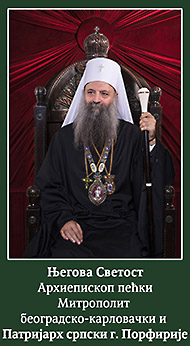After this ritual, the Divine Infant was given the name Jesus, as the Archangel Gabriel declared on the day of the Annunciation to the Most Holy Theotokos [Luke 1:31-33, 2:21]. The Fathers of the Church explain that the Lord, the Creator of the Law, underwent circumcision in order to give people an example of how faithfully the divine ordinances ought to be fulfilled. The Lord was circumcised so that later no one would doubt that He had truly assumed human flesh, and that His Incarnation was not merely an illusion, as certain heretics had taught.
St. Maximus the Confessor
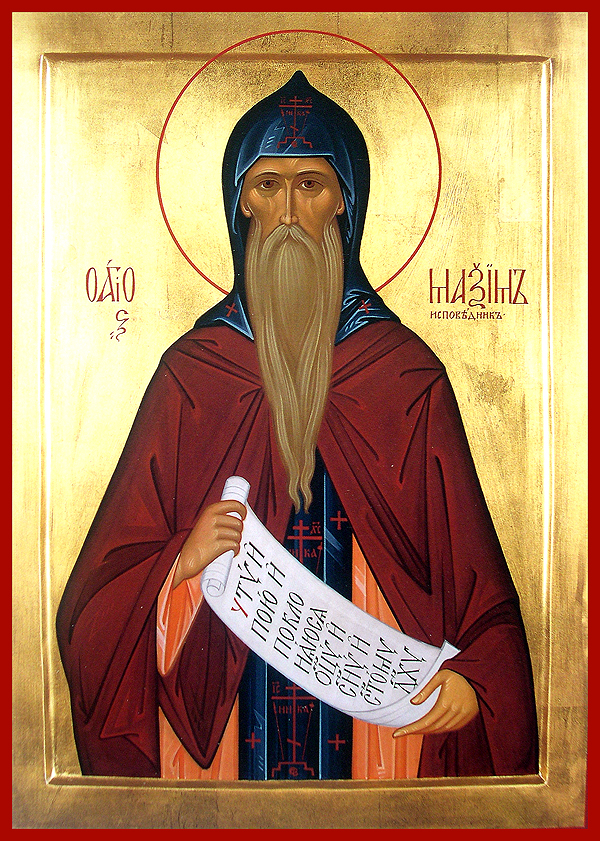 Saint Maximus the Confessor was born in Constantinople around 580 and raised in a pious Christian family. He received an excellent education, studying philosophy, grammar, and rhetoric. He was well-read in the authors of antiquity and he also mastered philosophy and theology. When Saint Maximus entered into government service, he became first secretary (asekretis) and chief counselor to the emperor Heraclius (611-641), who was impressed by his knowledge and virtuous life.
Saint Maximus the Confessor was born in Constantinople around 580 and raised in a pious Christian family. He received an excellent education, studying philosophy, grammar, and rhetoric. He was well-read in the authors of antiquity and he also mastered philosophy and theology. When Saint Maximus entered into government service, he became first secretary (asekretis) and chief counselor to the emperor Heraclius (611-641), who was impressed by his knowledge and virtuous life.
Saint Maximus soon realized that the emperor and many others had been corrupted by the Monothelite heresy, which was spreading rapidly through the East. He resigned from his duties at court, and went to the Chrysopolis monastery (at Skutari on the opposite shore of the Bosphorus), where he received monastic tonsure. Because of his humility and wisdom, he soon won the love of the brethren and was chosen igumen of the monastery after a few years. Even in this position, he remained a simple monk.
Panagia Galaktotrophousa (Milk-Feeder) of Hilandar Monastery
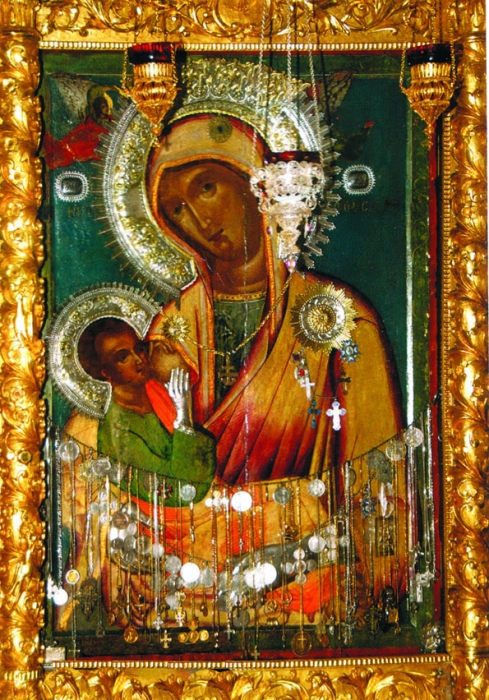 Verses
Verses
Noetic milk flows O you who were pregnant with God,
from your divine icon Galaktotrophousa.
On the third behold the honorable radiance of Mary the
Theotokos.
Galaktotrophousa is translated as „Milk-Feeder“. This icon of the Mother of God was originally located at the Lavra of Saint Savvas the Sanctified near Jerusalem. Befor the death, the holy founder of the Lavra foretold that a royal pilgrim having the same name as himself would visit the Lavra. As he approached the reliquary of Saint Savvas the Sanctified, the Saint's staff fell at his feet. The brethen asked the visitor his name, and he told them he was Archbishop Sava of Serbia. Obeying his instructions of their founder, the monks gave Saint Sava his staff, the Milk-Feeder Icon, and the Icon of the Three Hands.
St. Genevieve of Paris
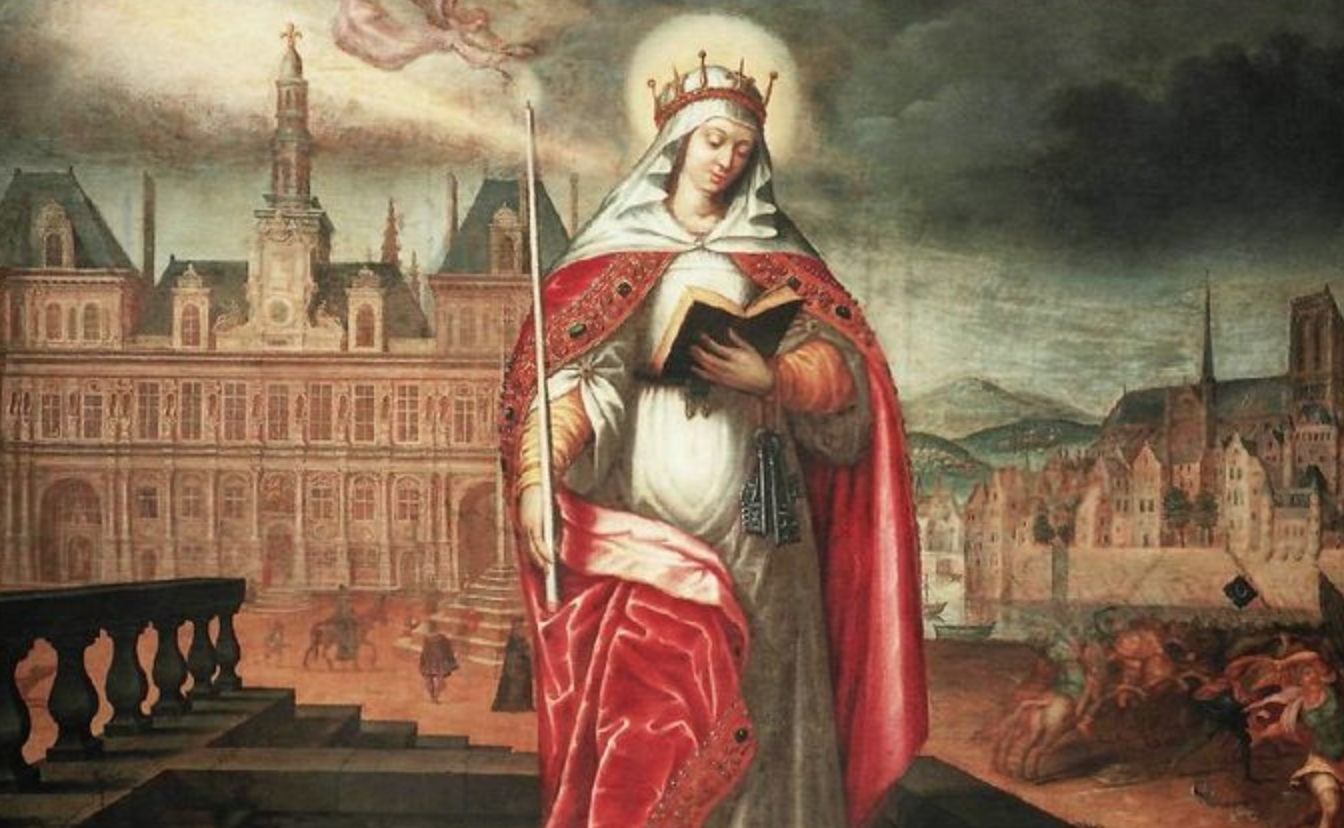 Commemorated January 3/16
Commemorated January 3/16
In France 500 years after Christ's birth, there lived a shepherd girl with a blooming faith in her heart, the very same faith which budded in the hearts of the Judean shepherds who followed the star to the Lord's manger-bed.
Born into a wealthy family, the young Genevieve watched her family's flock as a matter of custom rather than need. Their home was in the lovely hill-country of Nanterre outside Paris. And in it Genevieve's soul was nourished with the Gospel message, the icons which illumined it, and the example of her parents' peaceful and pious lives.
The Circumcision of our Lord and Savior Jesus Christ
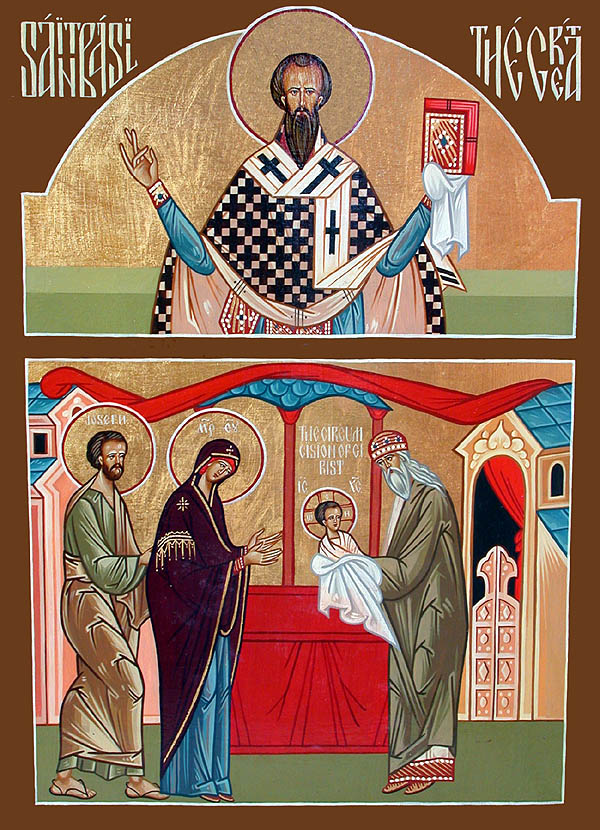 On the eighth day after His Nativity, our Lord Jesus Christ was circumcised in accordance with the Old Testament Law. All male infants underwent circumcision as a sign of God’s Covenant with the holy Forefather Abraham and his descendants [Genesis 17:10-14, Leviticus 12:3].
On the eighth day after His Nativity, our Lord Jesus Christ was circumcised in accordance with the Old Testament Law. All male infants underwent circumcision as a sign of God’s Covenant with the holy Forefather Abraham and his descendants [Genesis 17:10-14, Leviticus 12:3].
St. Basil the Great, Archbishop of Cæsarea in Cappadocia
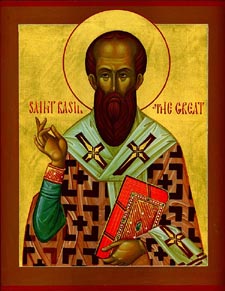 Saint Basil the Great, Archbishop of Caesarea in Cappadocia, “belongs not to the Church of Caesarea alone, nor merely to his own time, nor was he of benefit only to his own kinsmen, but rather to all lands and cities worldwide, and to all people he brought and still brings benefit, and for Christians he always was and will be a most salvific teacher.” Thus spoke Saint Basil’s contemporary, Saint Amphilochius, Bishop of Iconium.
Saint Basil the Great, Archbishop of Caesarea in Cappadocia, “belongs not to the Church of Caesarea alone, nor merely to his own time, nor was he of benefit only to his own kinsmen, but rather to all lands and cities worldwide, and to all people he brought and still brings benefit, and for Christians he always was and will be a most salvific teacher.” Thus spoke Saint Basil’s contemporary, Saint Amphilochius, Bishop of Iconium.
Saint Basil was born in the year 330 at Caesarea, the administrative center of Cappadocia. He was of illustrious lineage, famed for its eminence and wealth, and zealous for the Christian Faith. The saint’s grandfather and grandmother on his father’s side had to hide in the forests of Pontus for seven years during the persecution under Diocletian.
